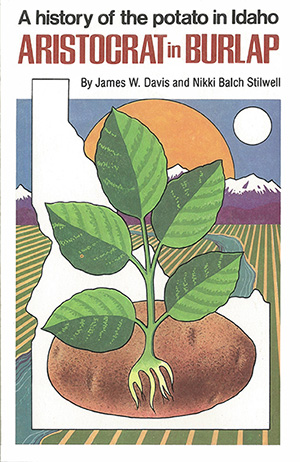HIGH-LIFT PUMPING CREATES SNAKE RIVER LAND RUSH
.jpg) This pumping station on the Snake River supplies irrigation water for the Grindstone Butte and Sailor Creek projects which include a total of 17,524 acres. The pumps are powered by electricity which has increased dramatically in cost since the projects were put in. Economics and water availability make similar high-lift developments in the future unlikely.
This pumping station on the Snake River supplies irrigation water for the Grindstone Butte and Sailor Creek projects which include a total of 17,524 acres. The pumps are powered by electricity which has increased dramatically in cost since the projects were put in. Economics and water availability make similar high-lift developments in the future unlikely.
Noble returned to his farm-implement business and found himself thinking about the Dry Lake situation for the next several days. The Snake River was only 500 feet below the plateau and water was being raised distances equal to that in the Columbia Basin project where he had inspected pumping stations and penstock installations. Upon investigation, he found that the Idaho Power Company did indeed have rights to Snake River water for the generation of electrical power, but water for domestic use and for irrigation use assumed an automatic first and second priority over that of generating power. He began talking to irrigation engineers and equipment manufacturers about the feasibility of an installation at the river to pump water up to the thirsty acres on the Dry Lake plateau.
Preliminary calculations indicated to Noble that the project was too big for him to handle alone, so he induced a couple of farmer friends, Bob Morris and Dale Jones, to buy some land next to the parcel, which he had subsequently purchased, and join him in the project. One of the major reasons that the Dry Lake development had waited so many years was the lack of electric motors, pumps, and water lifting technology that could meet the engineering requirements of the situation. The availability of sufficient electrical energy at feasible irrigation pumping rates was another factor that had only become a reality in recent years.
Although Noble found that the price of the land he purchased had risen from $25 to $125 when the news got out that the project was going to be a reality, he did make the purchase and by winter of 1961-62 had 640 acres of level sandy-loam soil ready for farming.
Another personality that figured strongly in the Dry Lake development was an experienced pipeline construction contractor, Jack Collins, who had come to the Boise Valley area a few years earlier with the construction of a natural gas pipeline. Many people looked at the precarious rocky canyon wall that rose above the Snake River and said that the construction of a penstock would be "impossible," "prohibitively expensive" or "foolhardy." After consulting several construction firms, Noble had Collins inspect the project and was assured without hesitation that it would be a comparatively simple one. In addition to his knowledge and experience, Collins' estimate of construction costs was about half of other bids obtained on the job, which enabled the three partners to obtain financing and begin construction. The whine of the Dry Lake project pumps was no sooner a reality when another project adjacent to the original one was put into operation by the Basin Land Company. This was another group of developers anxious to get into agriculture on new acres.


.jpg) This pumping station on the Snake River supplies irrigation water for the Grindstone Butte and Sailor Creek projects which include a total of 17,524 acres. The pumps are powered by electricity which has increased dramatically in cost since the projects were put in. Economics and water availability make similar high-lift developments in the future unlikely.
This pumping station on the Snake River supplies irrigation water for the Grindstone Butte and Sailor Creek projects which include a total of 17,524 acres. The pumps are powered by electricity which has increased dramatically in cost since the projects were put in. Economics and water availability make similar high-lift developments in the future unlikely.